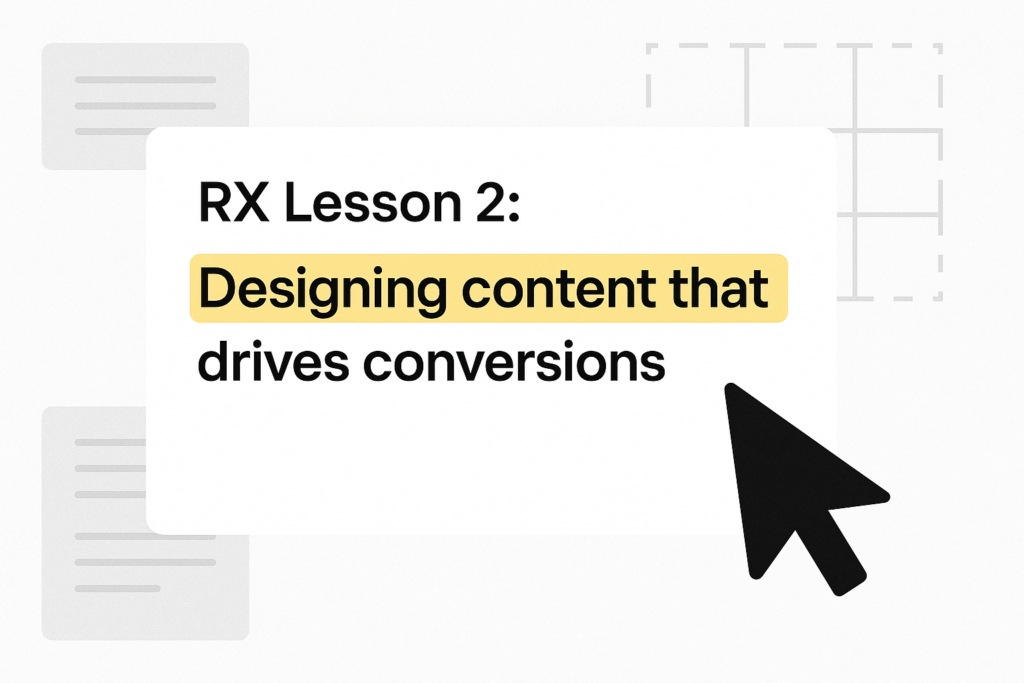The first article in this series focused on writing structure that holds attention. We’re shifting to technical writing that guides readers toward a conversion, specifically, how to write around a lead magnet.
A lot of technical writers treat lead magnets like an afterthought.
They drop them into the conclusion or sneak them into a sidebar. Or worse, mention them once in the middle of the article as if readers will stop everything and chase after it.
But conversion is not an accident. It is designed.
In this lesson, I’m walking through a piece I wrote for The New Stack, “GenAI Won’t Work Until You Nail These 4 Fundamentals.” Here, I used writing structure, attention flow, and psychological cues to keep the Boomi-sponsored lead magnet in the reader’s mind from start to finish.
Let’s unpack it.
1. Position the article as the preview
People remember what comes first, what comes last, and what stands out in the middle.
That makes your intro prime real estate. Don’t pretend your technical marketing article and lead magnet are equally valuable. Say the lead magnet is better.
Here’s how I did it:
“This article will uncover the four fundamentals for using GenAI effectively... with more actionable insights available in this comprehensive HBR report sponsored by Boomi.”This sets two expectations:
- The article is a preview, not a replacement.
- The lead magnet is where the depth lives.
By framing it early, the reader views the article as a bridge, rather than a destination.
2. Build the article around the lead magnet
The common mistake is to write a whole article and bolt on a lead magnet at the end.
Instead, structure everything around the lead magnet. In the article, each section referenced insights from the HBR report (quotes, stats, names). I moved it from a mention to the foundation.
This does two things:
- It keeps the article coherent.
- It makes the lead magnet feel earned.
🎯Cognitive fluency means readers are more likely to trust something that flows. When the lead magnet supports each idea, it feels more evident than promotional (This is another way to market without marketing).
3. Reference the lead magnet throughout the piece
Don’t wait for the CTA to mention your lead magnet. Weave it in naturally.
Here’s how I did it:
- Named expert quotes from the report: “Himanshu Arora, CXO advisor at Infosys, recommends…”
- Direct stats: “A KPMG survey from 2023 reveals that 19% of organizations…”
These references keep the report top of mind. The reader begins to treat it as the source of value, not an add-on.
🎯Semantic priming helps the brain build stronger associations. When the lead magnet shows up more than once, it feels familiar when the reader gets to the CTA.
4. Create a CTA that doubles as a conclusion
The best CTA wraps up the idea while pushing forward the action.
Here’s how I closed:
“This article only scratches the surface... To dive deeper into overcoming these challenges and access more actionable strategies for success, adopt the insights and expert recommendations in this comprehensive HBR report...”The message is clear that the article gave you the why. The lead magnet gives you the how.
🎯Recency effect makes your ending the most memorable moment. Make that moment count.

5. Say the quiet part out loud
I didn’t bury the lede. I amplified it.
In the intro and conclusion, I made it clear that this article was less valuable than the lead magnet. Not in these exact words, but close enough:
“In fact, this article is useless compared to the lead magnet.”Risky? Maybe. But effective.
It does three things:
- Shows confidence in the offer
- Sparks curiosity
- Establishes a hierarchy of value
🎯Contrast framing sharpens focus. Exaggerating the difference makes the better option stand out even more.
If your writing includes a lead magnet, write toward it.
Don’t bolt it on. Don’t bury it in the footer. Guide the reader’s attention to it with structure, memory cues, and emotional build-up.
Let the article be the preview. Let the lead magnet be the payoff.
⏭️Next lesson: Designing for cognitive momentum (How to structure your writing so readers don’t stall halfway through)

